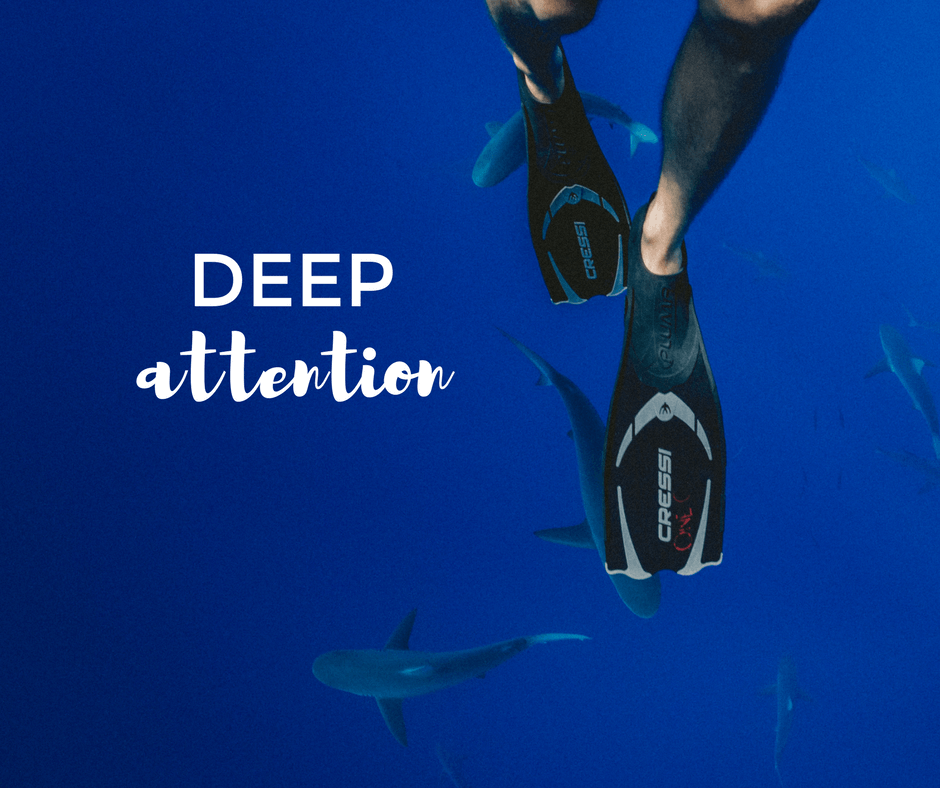
I find it interesting that when we speak about the art of paying attention, we use financial words: paying attention, spending time.
What is your time worth?
This question often sends us down the road of calculation. How much do we make annually? How much does that work out to as an hourly wage? These are helpful time-management questions, but they fall short when it comes to attention management. Here’s another question for you.
How do we make our time count?
Again, this is a quantitative question. The line of thinking sends me down the rabbit hole of a “quantified life.” How many hours did I spend writing? How many minutes running? How about working? Playing? Commuting? Suddenly, I feel like a bean counter in my own life. My attention is spent on counting, not on being present.
Articles like this one explain that negative experiences imprint more deeply on our minds than positive ones do. Understanding this tendency is important not only for mental health, but also as insight into the art of paying attention. What if we were able to treasure each moment as the pearl it truly is, rather than counting or weighing or measuring it?
- How might we notice our lives more fully?
- How might we open, unlock, unleash our attention?
- What might be possible if we noticed just ten percent more of the world around us?
Paying attention isn’t a separate activity.
Like most creative habits, it’s more a way of being than an item on a to-do list. No matter what we’re physically doing—eating, working, playing—our life’s moment can be treasures, or they can blur past, lost in fog. It’s a practice, a muscle we can build, and though it seems simple and possibly even unimportant in the larger scheme of life, the fact is, it IS life.
Your day awaits. How might you bring your attention more fully into its moments?

